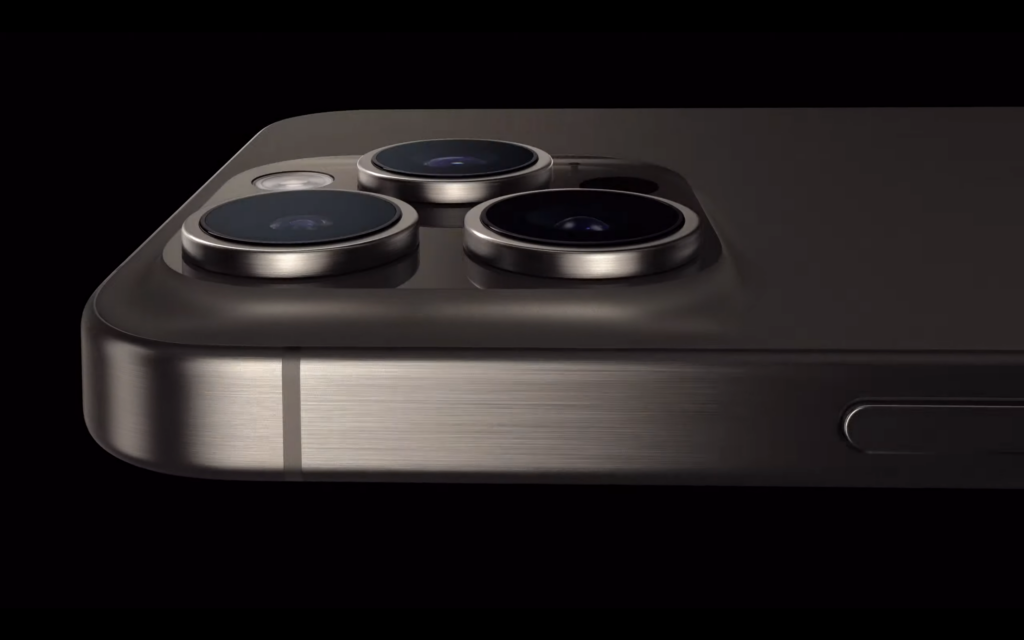Apple has just revealed the iPhone 15 Pro alongside the rest of the iPhone 15 range, boasting a number of key upgrades to tempt consumers towards Apple’s high-end smartphone in 2023.
That includes an upgraded chassis, going from stainless steel to titanium, an upgraded camera system, Apple’s first 3nm chipset, the A17 Pro, and of course, there’s the long-awaited switch to USB-C too.
The question is, how does that compare to last year’s creme of the crop, the iPhone 14 Pro? We’re yet to go hands-on with this year’s iPhone, but here are a few key differences between the two based on spec to help you decide which is best for your specific needs.
The iPhone 15 Pro has a 3nm chipset
One of the biggest upgrades on the iPhone 15 Pro is the chipset that powers the experience. That comes in the form of Apple’s A17 Pro, a break from the Bionic branding from the past few years.
It’s also the company’s first 3nm chipset, which should bring significant gains not only to performance but also battery efficiency, potentially allowing the iPhone 15 Pro to last longer than its older counterpart when running the exact same tasks.
The upgraded power of the A17 Pro also allows it to run console-level games, with Apple revealing that Resident Evil 4 and Assassin’s Creed Mirage are set to come to the iPhone 15 Pro and iPhone 15 Pro Max sometime next year.
The iPhone 14 Pro’s A16 Bionic is no slouch, however; our reviewer was very impressed with the raw performance on power on offer. It comfortably beat most of the Android competition at launch and continues to do so in 2023, which should mean top-level performance for quite some time to come.
You likely won’t be able to tell much of a difference in terms of sheer performance power in day-to-day tasks, but the newer iPhone 15 Pro should stay fast and responsive for a little longer.

The iPhone 15 Pro has an upgraded camera system
Though the iPhone 15 Pro and iPhone 14 Pro have the same 48MP main sensor on paper, there are several improvements to the 48MP sensor of the iPhone 15 Pro that should vastly improve overall performance.
That comes in a few forms, from a new sensor-shift OIS system that works in three dimensions to help stabilise photos and videos, along with the ability to record 4K@60fps ProRes video with LOG encoding for better range and flexibility when colour grading video content in post-production.
The 12MP ultrawide is also said to perform better in low-light conditions than the iPhone 14 Pro. The 3x telephoto remains unchanged, however – for a better 5x optical zoom, you’ll have to opt for the iPhone 15 Pro Max.
That’s not to say that the iPhone 14 doesn’t take a great photo – we thought it was one of the best camera phones available last year – but the iPhone 15 Pro should take mobile photography up a notch.
The iPhone 15 Pro has USB-C connectivity
The iPhone range has used the Lightning connector since the launch of the iPhone 5 back in 2022 – but that has all changed with the iPhone 15 collection.
The iPhone 15 Pro, along with the rest of the iPhone 15 collection, has made the jump to USB-C following an EU court ruling that mandates a standardised charging solution for phones sold in the EU. It’s built on the slower USB 2.0 standard on the iPhone 15, but the iPhone 15 Pro sees USB 3 support with theoretical top transfer speeds of 10Gbps.
The iPhone 14 Pro, like all other iPhones up until this point, features Apple’s Lightning connector. It’s a solid connector with plenty of accessories, but with wider adoption of USB-C, it should mean you shouldn’t have to look far for a charger to top up your iPhone 15.

The iPhone 15 Pro should feel more comfortable in the hand
The iPhone 15 Pro does look a lot like its predecessor, the iPhone 14 Pro, though there has been a slight change to the design of the chassis. It’s still more angular than most Android alternatives, but Apple has applied a rather soft contour to the edges and camera bump of the iPhone 15 Pro.
This not only gives the iPhone a refreshed look without a dramatic overall change, but it should hopefully make the iPhone 15 Pro a little more comfortable to hold compared to its more angular sibling, the iPhone 14 Pro.
The iPhone 15 Pro also enjoys an upgrade from stainless steel to titanium, with a brushed finish on the chassis also helping it stand out from its predecessor.
The iPhone 14 Pro is much cheaper
So, while it’s clear that the iPhone 15 Pro is a strong update that delivers the latest and greatest smartphone tech, the iPhone 14 Pro remains a tempting option for those who want a premium experience but aren’t too fussed about having the very latest technology – especially now that it’ll be available for much less than its original £1099/$999 RRP now that its successor is set for release.
If you do want an iPhone 15 Pro, however, it’ll cost you £999/$999. It’s set to go up for pre-order on Friday, with the phone set to ship on 22 September.




